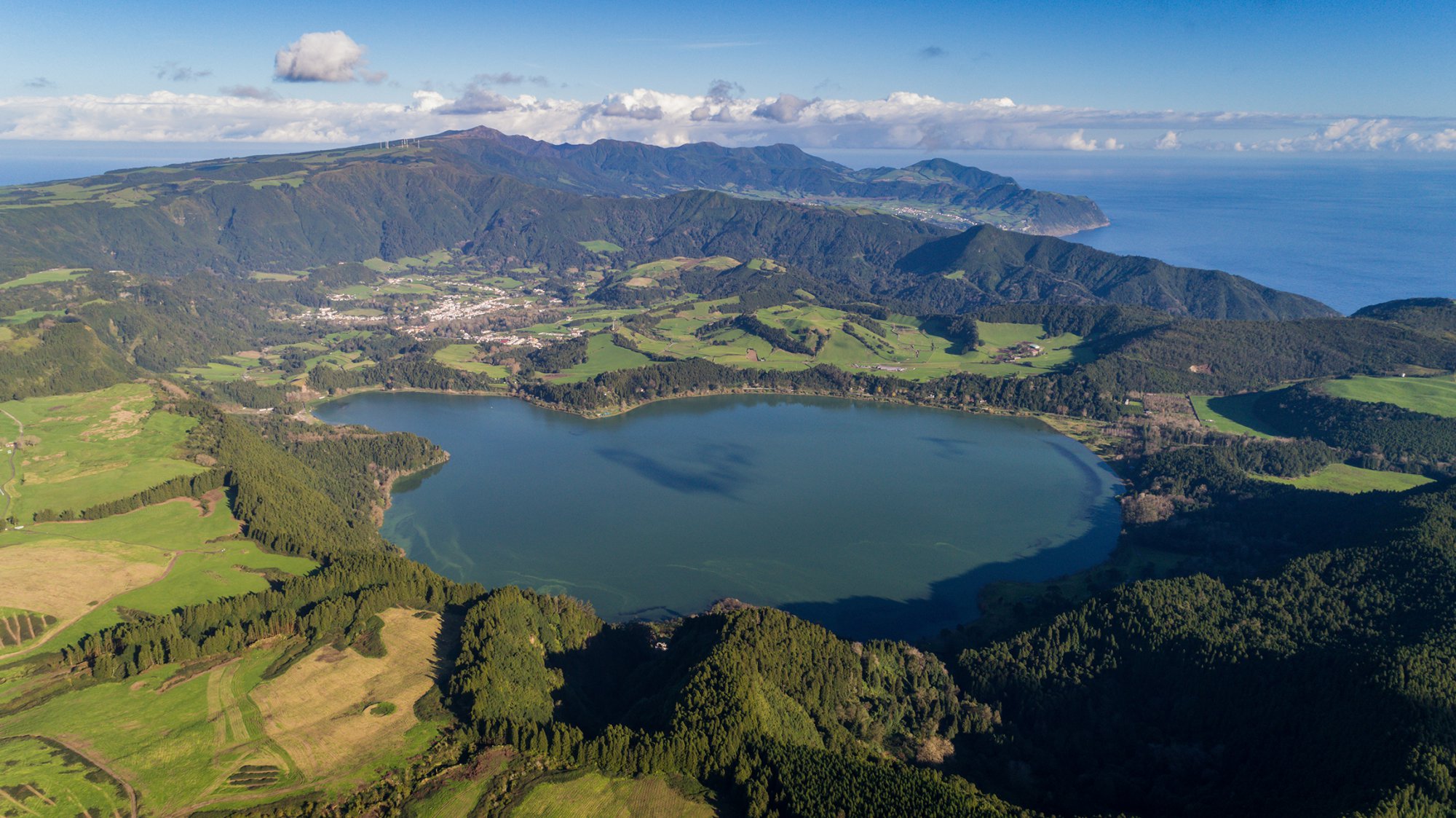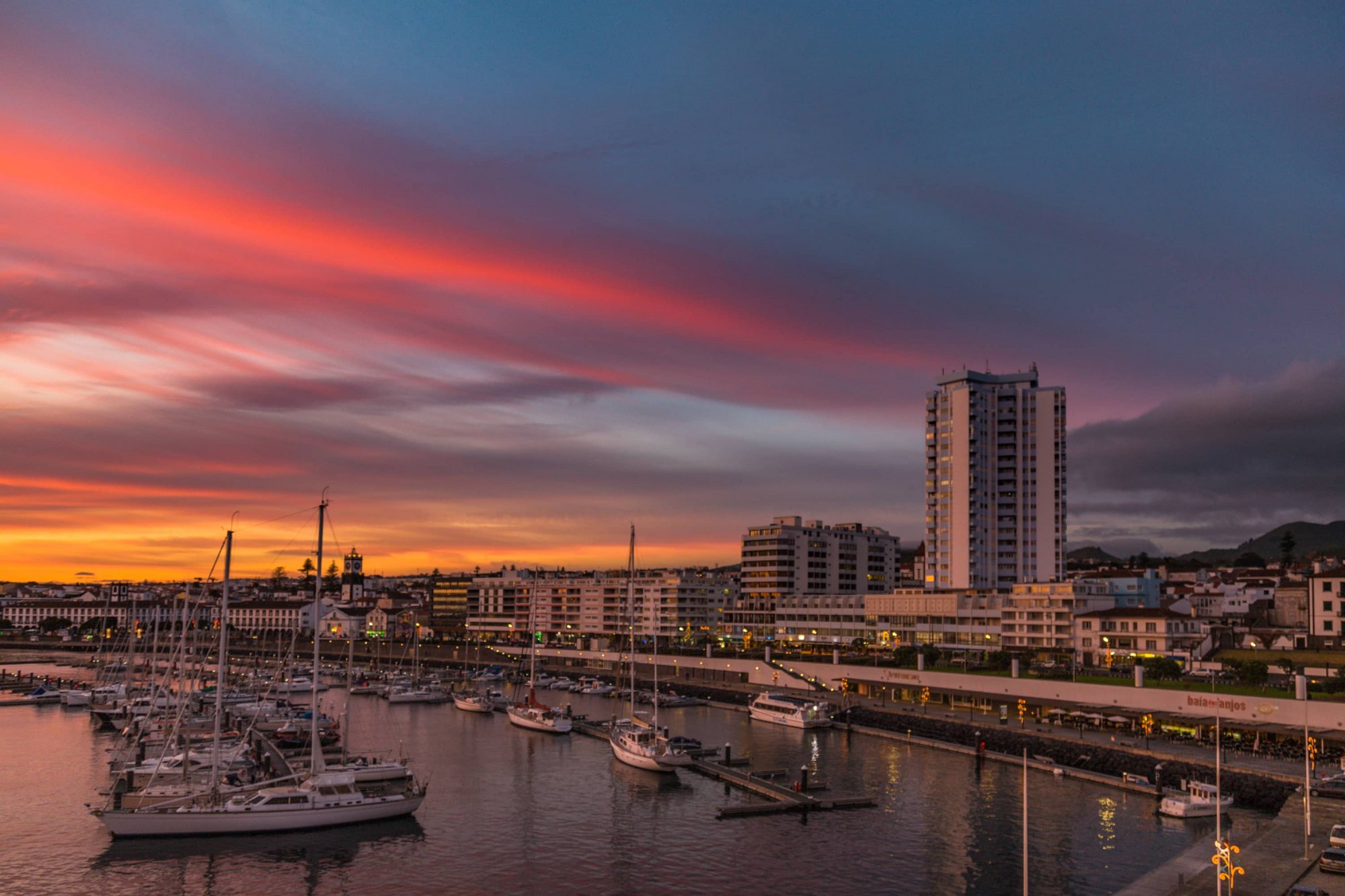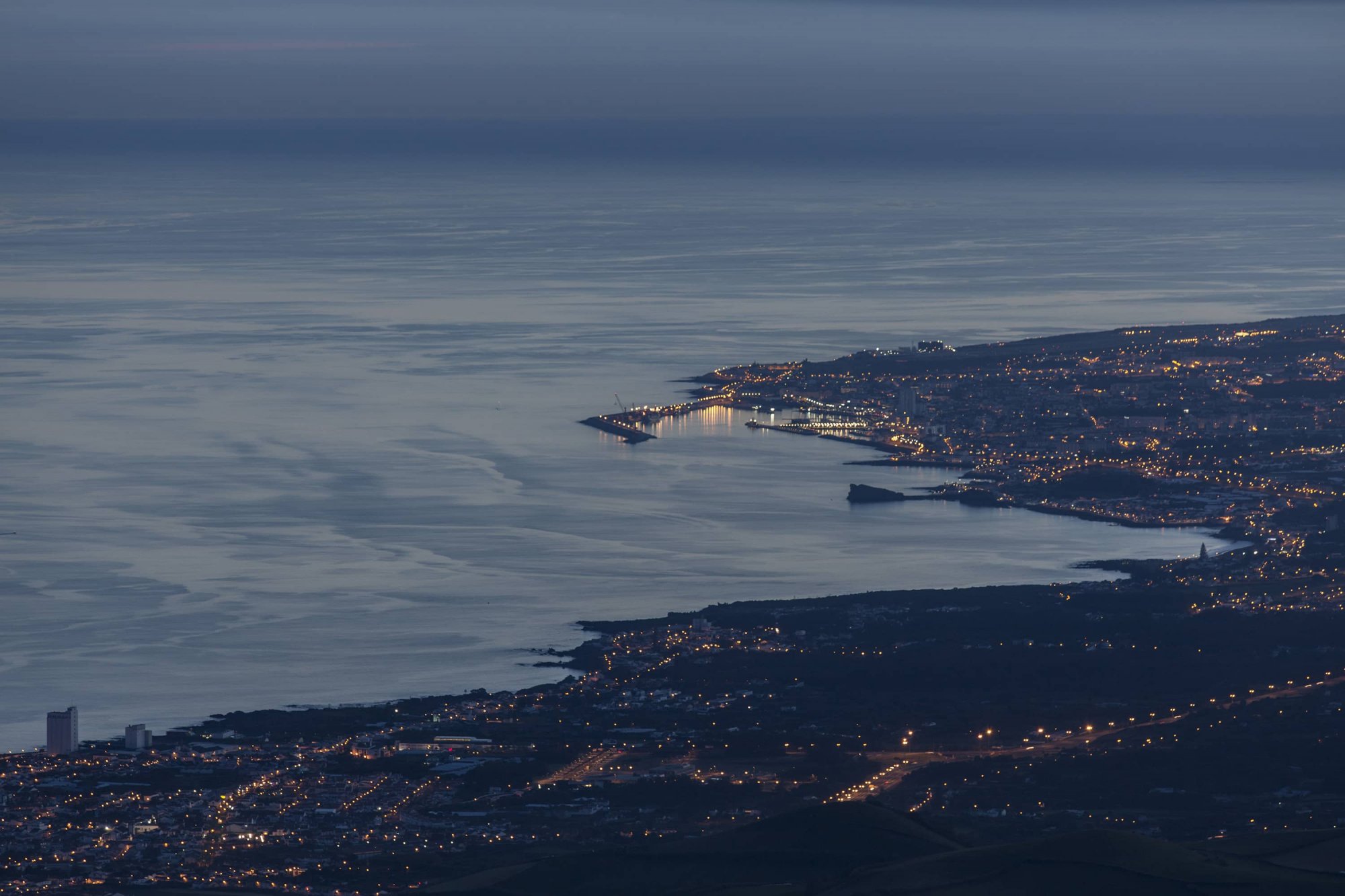The Azores
The archipelago of the Azores is located in the North Atlantic ocean and has a total surface area of 2.330 km 2 . It consists of 9 volcanic islands that spread throughout 600 km from its westernmost island, Flores, to its easternmost one, Santa Maria.
The islands are separated into three groups: the Western Group which includes the island of Corvo, the smallest one, with only 17 km 2 ; the Central Group, with the majestic island of Pico where the highest Portuguese mountain (2.351 meters high) is located; and the Eastern Group, composed by the islands of Santa Maria and S. Miguel, the biggest among the nine.
The island of S. Miguel has a total surface area of 749 km 2 – 67 km in length and 8 to 15 km in width – and it is the most populated in the archipelago with about 138.000 inhabitants. The climate is depicted as one that «portrays all four seasons in a single day» and its dampness favours the spread of luxurious landscapes with green pastures, forests of cryptomeria, and primitive vegetation dotted by the multiple and intense colors of the various flowers, particularly hydrangeas, hibiscus, oleander, azaleas, and camellia. Known as the «green island», S. Miguel rises up from the Atlantic with its slopes over the blue sea. It has several volcanic clusters, one of which is the Furnas Volcano, the youngest of the active volcanoes in S. Miguel. The small civil parish, where the volcanic phenomena still occur, takes its name after the volcano. As part of the municipality of Povoação, Furnas became a civil parish in 1791. Nowadays it is considered to be one of the most beautiful spots in the entire archipelago, and it is often addressed as «the guest room of the Azores» or «Vale Formoso» («Beautiful Valley»).
Its designation «Furnas» is related to secondary volcanic manifestations that occur in the valley, known as fumaroles or volcanic calderas. In such scenic paradise there is a diversity of both mineral and thermal waters within which excels thermal pools as «Poça da Dona Beija» and the emblematic pool at the «Terra Nostra» park. This last one is located in the botanical garden with the same name. The Lagoa das Furnas («Furnas» lagoon) is the visiting card of the place, resplendent among blooming gardens and thriving bushes evoking true fairy tales. At its margins, one can find, in one side, the chapel of «Nossa Senhora das Vitórias», and, in the opposite side, the area where the famous «cozido das Furnas» is cooked, under the heated soil thanks to the action of the fumaroles.
Ponta Delgada is located on São Miguel Island, the largest in the Azores archipelago. It's a city with more than five centuries of existence, whose title was granted by letter of D. João III, on 2 April 1546, in recognition of its dynamism and urban growth.
It's a city that, while preserving the architectural design of buildings from different eras and their traditions, has become modern and cosmopolitan. It invites you to take walks to the natural beauties located in the city and in the county and offers a wide range of options, whether at a cultural level, whether in terms of sports and leisure activities, or even in terms of gastronomy.
Visiting cards include Lagoa das Sete Cidades, the Pinhal da Paz Recreation Forest Reserve, Gruta do Carvão, the António Borges Botanical Garden, the José do Canto Botanical Garden, the islet of São Roque, the islets of Mosteiros and Milícias and Pópulo beaches. Among the various places to visit are the Carlos Machado Museum, the Graça Market, the Church of S. Sebastião, the Portas da Cidade, the Jesuit College, the Chapel of the Mother of God, the Sanctuary of Nosso Senhor do Santo Cristo dos Milagres, the Fort of S. Brás and the pineapple greenhouses. Whalewatching, scuba diving, bathing in the Ferraria and the various nature trails are just some of the activities you can enjoy. The city presents its habitants and visitors with several restaurants, which provide gastronomic experiences to remember.




